
Those who are native to Pennsylvania Dutch country know that the holidays aren’t complete without a fresh tray of sand tart cookies.
These ultra-fine, buttery treats are a delicate dessert, so light and thin that it is impossible to eat just one. At first glance, sand tarts seem like just another sugar cookie or Southern tea cake. But the differences stop there.
This seemingly simple cookie is a quintessential Pennsylvania Dutch classic turned holiday tradition. The centuries-old recipe has been passed down from one generation to the next, proving the most basic ingredients can create something truly special when baked with love.
Discover what makes these crumbly cookies such a delight and how they have lasted through time.
What Are Sand Tarts?
The Pennsylvania Dutch culture is the legacy of German settlers who came to Pennsylvania in the 18th and 19th centuries. Those who live in the area today proudly preserve the culture by sharing their stories and pastimes with visiting tourists. They continue to make and pass down their favorite recipes, and among the most beloved foods are sand tart cookies.
To the surprise of many, sand tarts are not actually tarts — a shortcrust pastry with filling. Sand tarts are a very thin, delicate light golden cookie that crumbles into a buttery-textured delight.
While the Pennsylvania German population claims to be the first to create this treat, there are a few other cultures that insist they did it first. Because the recipes are so similar and can be traced back to similar eras, there is some confusion surrounding the cookie’s name. However, most people in the area agree that the name is either attributed to the cookie’s texture or the traditional cinnamon topping that looks like “sand.”
The recipe is relatively simple, calling for just six ingredients:
- Flour: An all-purpose white flour is lighter than whole wheat or almond flour, making it the preferred ingredient.
- Eggs: These add structure, moisture and stability to the cookies, which are important characteristics for German sand tarts.
- Butter: Room-temperature unsalted butter is always used, as the temperature will affect the texture and pliability.
- Sugar: White sugar adds flavor and allows the dough to expand in the oven.
- Vanilla extract: Along with smelling amazing, vanilla extract adds flavor to the dough.
- Salt: Just a small amount of salt enhances flavor and helps make the cookies chewy.
If you are an experienced baker or have made your fair share of cookies, then you may have noticed that some traditional baking ingredients are missing. Sand tarts don’t need a leavening agent, such as baking soda or baking powder. They are meant to be as thin and fine as possible. Both the ingredients and techniques used when baking make these cookies stand apart from other biscuits on the shelf.
Dough
The end result of your finished cookies is completely determined by the structure of the dough. There are several important steps to ensure that the dough achieves the right consistency.
- Keep it cold: regardless of the sand tart recipe, the dough should be very cold in the refrigerator until you are ready to roll it out. The dough must be kept chilled and shouldn’t be worked for too long so it falls to room temperature. As you roll out and even cut or shape the dough, you should keep the scraps and oven-ready batches in the fridge, or place them immediately in the oven.
- Roll it right: Rolling out the dough correctly is crucial to how the cookie bakes. Experienced bakers often suggest using a cotton pastry cloth and rolling pin to manipulate the dough. No matter how you roll it out, you should use enough flour to keep the dough from sticking. However, too much flour will work into the dough and change the texture of the cookies.
- Roll it thin: The dough needs to be rolled out as thin as possible. In fact, the dough should be so thin it becomes transparent — you should be able to see the cutting board underneath it.
When transferring the cut-outs onto a parchment-covered baking sheet, bakers often use a metal spatula so the dough stays intact and chilled.
Baking
Sand tarts are baked at 350 degrees and only for just 5 to 7 minutes. With how thin the dough is, these cookies bake incredibly fast. This makes it easier to bake multiple batches in one day. The cookies are usually left in the oven until the edges turn a light golden brown.
Most bakers enjoy using cookie cutters to create cute and holiday-themed shapes. But you can also find drop sand tarts, which are made by spooning the dough and simply dropping it onto the baking sheet.
When baking several batches, bakers will often use multiple baking sheets. Transferring cold dough cut-outs to a warm sheet will cause the butter to melt before the cookie can bake. This is another reason to keep the dough chilled up until it goes into the oven.
Texture
Don’t let the name confuse you. Sand tarts taste nothing like sand, nor are they dry and super crumbly. In general, sand tarts are moist but crisp, chewy yet delicate. So while the cookies do have a crumble to them, they don’t completely break down when you eat them. Instead, they melt into an intriguing combination of fine, buttery, delectable sweetness.
Because these cookies are so simple to make and can easily be made in multiple batches, you’ll end up having plenty of leftovers to enjoy later or give away. You can’t store these treats like any other dessert. When stored incorrectly, they will lose their soft, crumbly texture.
To keep them fresh, store your extra cookies in an airtight container in a cool place. If you have leftover dough, you can roll it into a log and keep it in the fridge for up to a week. Or, you can store the dough in the freezer for up to a month.
Toppings
Traditional sand tarts are topped with a dusting of cinnamon. However, depending on the origin of the recipe or personal preference, they can be adorned in many different ways.
For example, Amish sand tarts are brushed with an egg wash, sprinkled with cinnamon sugar and decorated with a pecan or walnut. Another popular decoration is colored sugar, especially around the holidays. Other common toppings include powdered sugar, almonds and sprinkles.
While these treats are typically saved for the winter, you can also turn them into a summer snack by using a teaspoon of lemon extract, as well as the vanilla extract.
Sand Tarts vs. Sugar Cookies and Shortbread
Sand tarts are often compared to other cookies that are similar but not quite the same. Russian tea cakes, Southern tea cakes, sugar cookies and shortbread cookies are all similar variations, but they have notable differences that make them their own dessert.
Sand Tarts and Sugar Cookies
Sugar cookies are another classic, deviously plain dessert. While they are now a beloved worldwide treat, sugar cookies originated in the same region as sand tarts! It is believed that sugar cookies evolved in Nazareth, Pennsylvania, by German Protestant settlers.
There are a few minor differences between sand tarts and sugar cookies. The first is that sugar cookie recipes call for baking powder and baking soda. While sugar cookie recipes only require a dash of these two ingredients, they completely change the structure of the cookie. Baking soda and baking powder are leavening agents that cause cookies to rise in the oven. They make desserts fluffy and airy.
The other difference is in the toppings. Sugar cookies are already sweet but can also be decorated with a glaze, icing, sprinkles and cinnamon sugar. Sand tarts are typically topped with cinnamon, nuts and a light sprinkle of colored sugar.
Both pair well with a cup of hot coffee or tea, but sand tarts are distinctly crisper, thinner and divinely sweet.
Sand Tarts and Shortbreads
Shortbread cookies are a traditional Scottish cookie, made with sugar, butter and wheat flour. Sometimes paired with chocolate, fruit, powdered sugar, icing, preserves or lemon curd, shortbread cookies are a delicious buttery sweet treat that tastes just as great plain as they do decorated.
Just like sand tarts, shortbread cookies do not contain a leavening agent. Unlike sand tarts, shortbreads are made with confectioners’ sugar and don’t need an egg wash over top. They are also denser and less sweet, with butter being the dominant flavor. Shortbreads are baked just a little bit longer in the oven and start changing color on the bottom when they are finished baking.
History of Sand Tarts
The Pennsylvania Dutch population proudly claim the sand tart as their own creation. However, the exact origin of the cookie is unknown and poses understandable speculation. What is known for sure is that some variation of the delightful cookie dates back to the 17th or 18th centuries and across multiple countries. But nations sharing similar recipes, especially during the same eras, is fairly common.
Given the resources and ingredients that were popular and available during the time sand tarts came to be, it is absolutely plausible that the same cookies were circulating in different regions without the creators knowing or realizing it.
French Sablés
It’s no surprise that the French would invent such a delicate and scrumptious cookie. As one of the great culinary capitals of the world, French cooking methods, techniques and secrets of the trade have defined and shaped the Western world’s food culture. One of the earliest recipes for a sand tart-like cookie is traced back to 1670. French aristocrat Madame de Sevigne recorded a description of the cookie in a series of letters.
In French, the word “sablé” translates to “sandy.” This word is used to describe textures that resemble breadcrumbs and perfectly captures the look and feel of sand tarts and sablés. Modern recipes for sand tarts require the baker to use mixers. However, the recipe for sablés requires the baker to use their hands to work the cold butter, sugar and flour, rubbing the ingredients together to form a crumbly texture that has a similar appearance to sand.
The difference between French sablé cookies and sand tarts is in the thickness. While the recipes utilize the same ingredients, the dough for sablés is not rolled out to the point of transparency, as it is with sand tarts. And if you ask any Pennsylvania Dutch native, they will tell you that the density and crispness are what make a sand tart the ultimate holiday treat.
Norwegian Sandbakelse
More than a thousand miles away from the French kitchens that invented the sablé is the region that brought sandbakelse into the world. Sandbakelse, also known as “sandbakkels,” “sandkaker” or hiekkahentuset,” are cookies made of ground almond, eggs, sugar, butter and almond extract, sometimes vanilla extract.
Looking at the ingredient list, you can already spot a major difference between sandbakkels and sand tarts. Sandbakkels are made with ground almond and almond extract. This changes the texture of the cookie and the taste, as well. Almond cookies have a distinct sweetness and flavor that is light, natural and definitely different from a standard sand tart.
Once the sandbakkel dough is formed and chilled, it is pressed into fluted tins so the cookies are baked into a very specific cup-like flowery shape. These Norwegian cookies are fairly thin but take just a few minutes longer to bake than sand tarts. Immigrants from Scandinavia brought their fluted tins over to the United States to keep their favorite Christmas tradition alive in their new, foreign home. And while their cookies are certainly similar to our treasured sand tarts, they are definitely different treats.
Southern Tea Cakes
Lastly, there are Southern tea cakes. On the surface, these delectable cookies are nearly identical to sand tarts. There aren’t any records of the first Southern tea cake, but personal accounts can attest that they have been enjoyed during the 18th century. There have also been recipes linked to African American slaves who adapted their own version of the recipe to reflect their available resources at the time.
This vintage Southern classic is the perfect cross between a cookie and a cake. They have just enough sugar to offer a light sweetness, just enough to classify it as a dessert. There are several variations of Southern tea cakes out there. Some include molasses, buttermilk and baking soda. But no matter how they are made, they pair well with coffee, tea or a glass of cold milk.
There are a few other similar recipes from around the globe that resemble sand tarts. Russian tea cakes, Mexican wedding cakes and pecan sandies are all made with the same basic ingredients but deliver completely different results. But there is no denying how influential these small desserts are in every culture they originated from.
Genuine Pennsylvania Dutch Sand Tarts
After tracing the threads of the many beloved cookie recipes back to their origins, it’s clear that Pennsylvania holds the true root of the sand tart cookie’s history. In fact, the earliest printed recording of the Pennsylvania Dutch recipe can be found in Sarah Tyson Rorer’s recipe book, “Mrs. Rorer’s Philadelphia Cook Book: a Manual of Home Economics.”
Rorer is hailed as the first dietician in the United States and founded the Philadelphia Cooking School in the 1880s, which became the pillar for creating and documenting her recipes. Rorer’s book allowed the treasured sand tart to become holiday staples in homes across the East Coast, with basic ingredients and clear instructions.
A second cookbook published in 1896 boosted the awareness and popularity of the Pennsylvania Dutch sand tart. Fannie Merritt Farmer’s “The 1896 Boston Cooking-School Cook Book” was a best seller the year it was published.
While this tiny little cookie seems like a simple bake, especially to experienced bakers, sand tarts were exceptionally difficult to make during the 18th and 19th centuries. Take a moment to consider the resources that were present at the time to the common individual and household.
Families didn’t have electricity, let alone a source to control the heat from their oven or hearth. Without proper refrigeration, it was near impossible to make these cookies during any other time of the year. They became traditional Christmas treats because they had to be made in the winter, during the coldest months of the year. This allowed bakers and homemakers to keep their dough chilled outside in a safe location while the cookies baked in batches.
The Legacy of Pennsylvania Dutch Cooking and Baking
The United States is home to many subcultures. From the top of New England to the Southern Georgia border, the original colonies that gave birth to this nation have held their history and traditions with great pride and love. As immigrants came to the country, they resolved to keep their heritage alive by continuing to create and share their favorite foods. This is especially true of German immigrants who made Pennsylvania their home.
The German immigrants who settled in Pennsylvania mostly came from German-speaking territories in Europe. They openly identified themselves as “Deutsch,” as they spoke several dialects that were not shared by the newer generation of immigrants who came later on. As the new and old waves of immigrants created a cross-dialogue of communication, they formed a hybrid dialect of Pennsylvania German — also known as Pennsylvania Dutch. While not too many people within the region are fluent nowadays, you can still pick up the accent in casual conversation.
If you have not had the pleasure of visiting the lush and mountainous regions of the Keystone State, it may be difficult to imagine just how strong these roots are even today. There is no doubt that you have heard of our Amish locals and bustling farmer’s markets. But the culture and rituals of our German ancestors are embedded even deeper in our modern age.
The best resources we have to trace our history are the recipes, journals and family stories passed down from generation to generation. Our region is so rich in history and values its cultural identity that these primary sources have withstood the test of time even 200 years after their humble invention.
While there may not be any official documents verifying that sand tarts were created in a specific kitchen in the middle of rural Pennsylvania, there are dozens of handwritten family recipes that certify the suspected timeline of when and where we believe they originated. A simple search online will show you the home bakers who have rediscovered their grandmother’s and great-grandmother’s sand tart recipes and are eager to share them with the world.
Luckily for you, you can experience them for yourself today.
Experience the Authentic Flavors of Pennsylvania Dutch Home Cooking With S. Clyde Weaver
Whether you are celebrating a special occasion, gathering with loved ones during the holidays or are just looking for a way to treat yourself, embrace the Pennsylvania Dutch culture with S. Clyde Weaver’s sand tart cookies.
Our genuine Pennsylvania Dutch desserts transport you back to a simpler time with wholesome recipes that taste just like Grandma’s. From our specialty shoofly pie and irresistible sticky buns to apple butter and natural preserves, we have all the food and desserts that define Lancaster County’s culture.
Stop by one of our locations today and experience the best of the Keystone State for yourself or shop online!





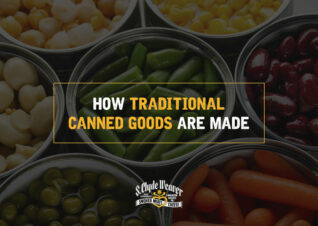
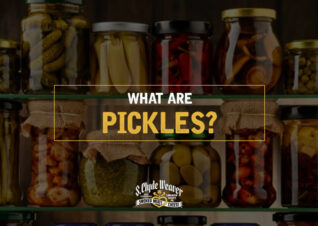



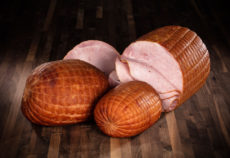

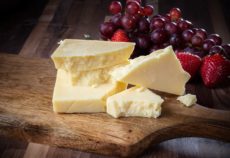
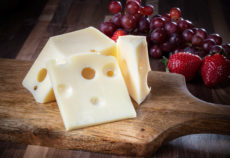
Can you bake sand tarts in a convection oven? I’d like to try baking a batch myself, but I have a convection oven, and I wondered if would work. Thanks!